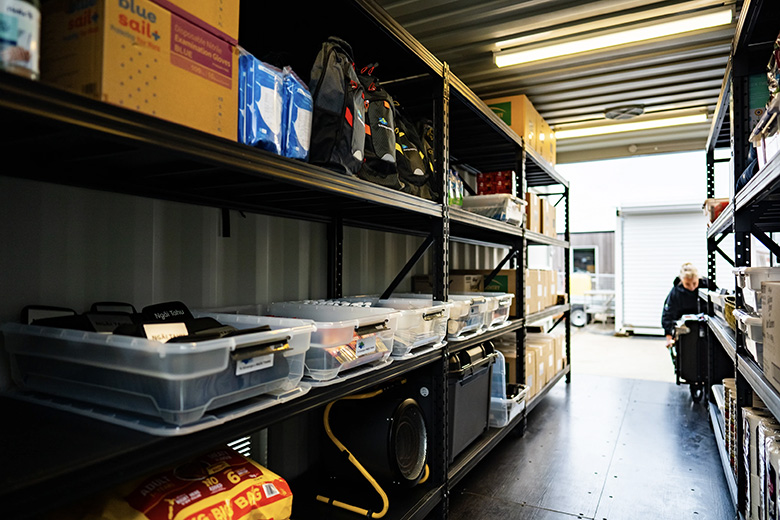Despite being a member of the Hawke’s Bay Civil Defence Emergency Management Group joint committee, Bayden Barber isn’t relying on it to provide disaster relief to his people.
Barber, the Ngati Kahungunu Iwi board chairman, has instead turned to private enterprise, rather than the community Civil Defence model that emerged in the wake of Cyclone Gabrielle.
The Hastings District Council secured Ministry for Primary Industry funding to stand up community hubs, which will theoretically be equipped to help people respond and survive in an emergency.
Instead, Barber has shipped containers, loaded with disaster resilience equipment to various marae throughout Ngati Kahungunu’s catchment.
It’s a recognition, he says, of the fact Hawke’s Bay remains completely unprepared to respond when the next natural disaster hits. “Oh, we’re not nowhere near prepared at the moment. So, yeah, the short answer would be no,’’ Barber said.
“I think most of our communities are still reeling from the last one and haven’t lifted their head out of the mud really for the next one. We’re trying to encourage our marae to do that, especially the marae that are either coastal or based close to riverways, which is most of them.’’
Marae were identified in both the regional and national inquiries into Cyclone Gabrielle as critical to the response to a disaster, which Barber says was acted upon by the national Iwi Chairs Forum.
“We were able to get some funding through government to get these containers so we can make our marae more resilient, and they can be prepared for the next Cyclone Gabrielle,’’ said Barber. “Not all of our marae are working with councils and CDEM so we tried to fill in the gaps.’’
Barber acknowledges his place in the official disaster response structure, but makes no apology for seeking solutions from outside it.
“Some marae have a connection with this district council, CDEM kaupapa. Those that don’t, we’ve asked those marae to contact us and if they have a place where they could use these resources, we’re putting them out there.’’
Napier-based disaster resilience and preparedness company EPOD has become increasingly expert in supplying containers to groups and organisations throughout the country, since Cyclone Gabrielle. That includes Ngai Tahu in the South Island, as well as councils and Civil Defence branches from Wairoa to Christchurch.
EPOD hasn’t made the same headway with the Hastings District Council (HDC).
EPOD general manager Harry McPhail believes it makes sense for his company to try and work alongside the community hubs set up by HDC. He says EPOD will even take care of the funding for the containers and the equipment inside.
“We have come up with an alternative emergency management system that sits outside HBCDEM, that is community driven, community enabled and community focused and we believe it will have such a positive impact against any future disasters or emergencies and we think that should be something that can be integrated into the CDEM systems,’’ McPhail said.
“Other regions around New Zealand are doing similar strategies with us and all we’re wanting is some positive engagement so we can actually get these much needed things out there.’’
McPhail’s strategy, which he’s been in discussions about with Ngati Kahungunu, involves a connected Hawke’s Bay EPOD network, built around a central supply hub.
It’s an idea that’s attracted the interest of Minister for Emergency Management and Recovery, Mark Mitchell, who visited EPOD on Friday to hear about the service and equipment they provide.
Public Interest Journalism funded through NZ On Air

